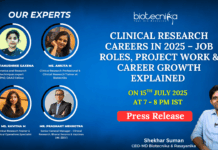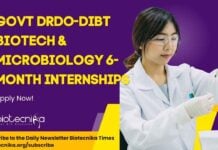Philip Leder’s Contributions To Science Who Expired At The Age Of 85
Philip Leder, an American geneticist who helped to elucidate genetic code and understand the role of genetics in immune disorders and cancer, died Feb. 2 at his home in Chestnut Hill, Mass. He was 85. He was suffering from Parkinson’s disease.
Leder began his career at the National Institutes of Health where he worked in the laboratory of Marshall Nirenberg, the 1968 Nobel laureate in Physiology.
The groundbreaking research of Leder with Nirenberg on deciphering amino acid sequences within DNA during the early 1960s became so popular in the scientific world that the research started to be known as Nirenberg and Leder experiment. He helped in the discovery which said genetic code is arranged in varied sequences of three nucleotides.
Dr.Leder founded the Genetics Department at Harvard Medical School after he moved from NIH in 1980. One of his major contributions to science was the discovery that certain genes can cause cancer through some genetic alterations or mutations. These genes called oncogenes are not malignant by themselves but can turn into potential cancer-causing genes when interacting with certain other genes that alter or deregulate them. Dr. Leder was
a leading scientist in the field of genetics in cancer.He also studied ways to develop antibodies to defend against infectious diseases. He was awarded one of the highest honors in medicine, the Albert Lasker Award for Basic Medical Research in 1987.
In an interview with the Lasker Foundation in 2001, Dr. Leder discussed the genetic code of antibodies. By encoding the antibody molecules, one can switch the genetic segments around so that it changes the complete meaning and make an antibody against the measles virus or ragweed pollen, he said.
In 1988, Dr. Leder along with his colleague at Harvard developed OncoMouse, a genetically modified mouse to develop cancer. This led to major breakthroughs in understanding the development of certain cancers, including lymphoma and breast cancer.
Animal rights groups and some others opposed Dr.Leder’s development of OncoMice and warned him about the dangers of cloning and creating new life forms that could be sold for profit.
“There are well-intentioned people on both sides of that argument”, he responded to the opposition. But Dr. Leder firmly believed that it is crucial to conquer the awful disease cancer.
Dr. Leder was born in Washington on Nov.19, 1934. His mother was a homemaker and father owned a children’s clothing store in Northern Virginia. He attended the old Western High School in Arrington and graduated in 1952.
In 1956, he received a bachelor’s degree from Harvard and in 1960, he graduated from Harvard Medical School. He joined NIH in 1962 and spent a year in Israel as a scientist and then returned to NIH and continued his contributions to science. At the National Institute of Child Health and Human Development, he headed the molecular genetics laboratory.
Tasuku Honjo, who received the Nobel Prize in 2018 was a postdoctoral fellow at NIH under Dr. Leder. Another postdoctoral fellow of his, Shirley M. Tilghman later became the president of Princeton University.
In his lectures, Dr. Leder was known for his humor and for clarity of presentation that made his subject comprehensible to newcomers and experts alike. He also held a research position at the Howard Hughes Medical Institute in Chevy Chase, Md. He received the National Medal of Science in 1988 and retired in 2008.
Survivors include his wife of 60 years, the former Aya Brudner, a scientist who worked alongside her husband in his laboratory, of Chestnut Hill; three children, Micki Leder of Washington, Ethan Leder of Bethesda, Md., and Ben Leder of Westwood, Mass.; and eight grandchildren.
At Harvard Medical School, Dr. Leder helped set the academic tone and made the school’s hiring practices more inclusive. He also insisted that the genetics department building has open spiral staircases, instead of stairwells, allowing faculty members to meet and interact more freely.
“The work is interesting and absorbing — you can hardly call it work,” he said in 2001, describing his research. “It’s very, very satisfying and rewarding, On the other hand, if you can’t stand disappointment and failure, you can’t do this work. But when it is successful, those are gleaming moments that are just wonderful.” Philip Leder’s contributions to science will be remembered always.






























